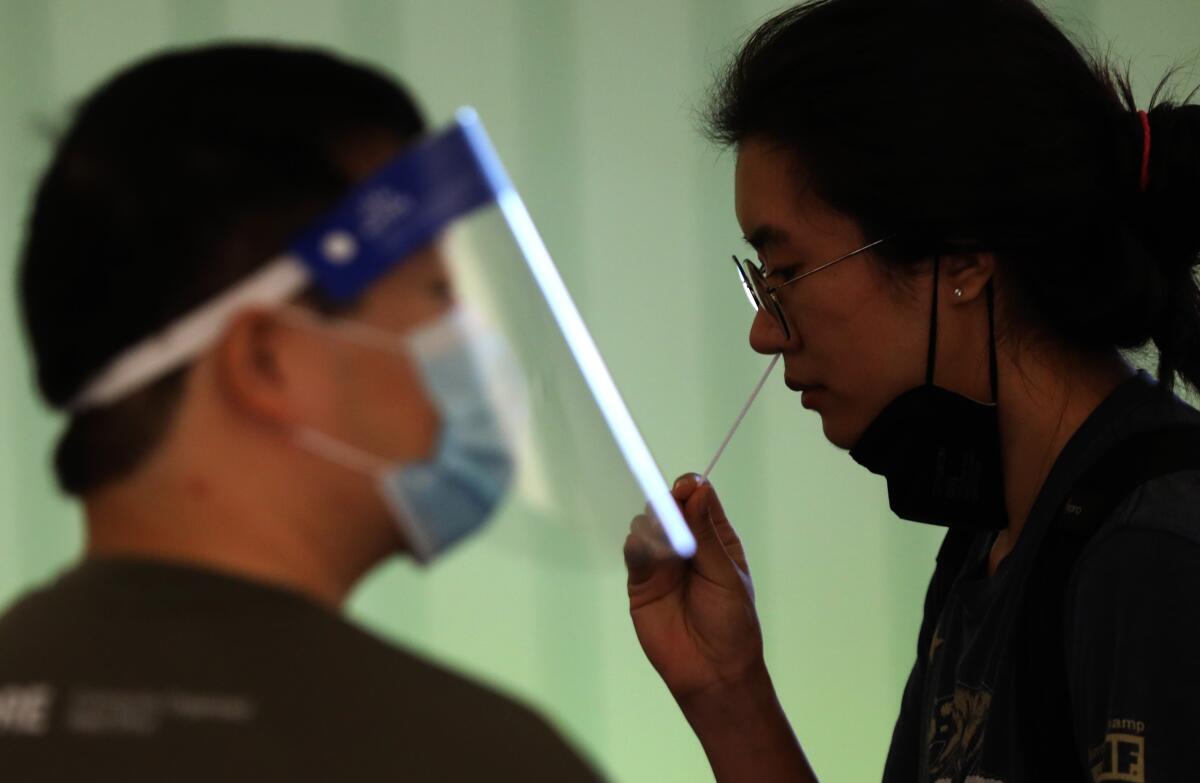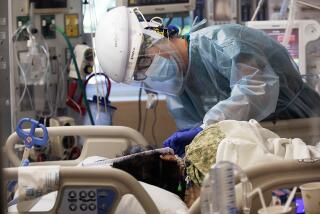California’s new indoor mask mandate: What you need to know

- Share via
SAN FRANCISCO — California on Wednesday announced a statewide mask mandate for indoor public spaces.
Here is what you need to know:
What is the mandate?
Beginning Wednesday, wearing masks in indoor public settings is required.
“Even a 10% increase in indoor masking can reduce case transmission significantly,” said Dr. Mark Ghaly, the California health and human services secretary, in explaining the new rules.
The coronavirus is airborne and can also spread silently from infected, asymptomatic people.
How long does the order last?
It is set to expire on Jan. 15.
Who is covered?
The order will affect roughly half the state’s population, including San Diego and Orange counties, the Inland Empire, the Central Valley and rural Northern California. The statewide indoor mask mandate order will last a month and will expire on Jan. 15.
Los Angeles County, Ventura County and most of the San Francisco Bay Area have their own indoor mask mandates that were implemented in the summer. While those jurisdictions have issued criteria by which officials would end the local mask mandates, there is no specific end date to the others in those areas.
Why is this happening?
California has seen the beginning of a winter surge of the Delta variant. And there are worries about the new Omicron variant.
Coronavirus case rates have risen by 50% in the last 2½ weeks, and county health officials across the state say they suspect they may be seeing the start of a winter jump in coronavirus cases. The U.S. Centers for Disease Control and Prevention considers California as having a high level of transmission of the coronavirus, the worst tier in the federal agency’s four-tier scale.
California’s announcement came on the same day New York enacted its own statewide mask requirement in indoor public spaces, exempting only settings where everyone inside must be vaccinated.
On Monday, the California Department of Public Health offered these tips:
- Celebrate safely: Take commonsense steps this holiday season to protect yourself, your family and your community as you celebrate.
- Upgrade your mask: Good fit and filtration continue to be the best way to get the most out of your mask. The best masks for preventing COVID-19 include the N95, KN95 and KF94. If you don’t have access to one of these masks, wear a surgical mask or a surgical mask with a cloth mask on top. If you choose a fabric mask, opt for one with three or more cloth layers. No matter what kind of mask you wear, check the fit by avoiding gaps above the nose or on the sides.
- Get vaccinated for COVID-19 and flu: It’s your turn now! It’s recommended that everyone over six months of age be vaccinated for the flu. For COVID-19, Californians age 5+ are eligible to make appointments or go to a walk-in site for vaccination. You can get your flu and COVID-19 vaccines on the same day.
- My Vaccine Record is an easy way to show vaccination status at venues or businesses that require proof of vaccination. Visit myvaccinerecord.cdph.ca.gov today to get your vaccine record.
- Stay home & get tested if sick: If you are experiencing symptoms of COVID-19 (fever, cough, shortness of breath, fatigue, muscle or body aches), or believe you have been exposed, get tested, call your healthcare provider, and stay home and away from others. Free, confidential testing is available statewide. Avoid close contact with people who are sick and stay home from work and school if you feel ill.
- Wash hands with soap and water for at least 20 seconds.
- Travel tips: Delay travel (both domestic and international) until you are fully vaccinated. If you must travel before being fully vaccinated, consider getting tested before and after travel. See the CDC’s full travel guidance.
- Avoid crowded venues or areas when cases are high.
- Add your phone to the fight: Sign up for COVID-19 exposure notifications from CA Notify.
- Answer the call or text if a contact tracer from the CA COVID Team or your local health department tries to connect.
- Check with your local health department about local conditions. Local health jurisdictions can implement protocols that are stricter than state guidance.
More to Read
Sign up for Essential California
The most important California stories and recommendations in your inbox every morning.
You may occasionally receive promotional content from the Los Angeles Times.











